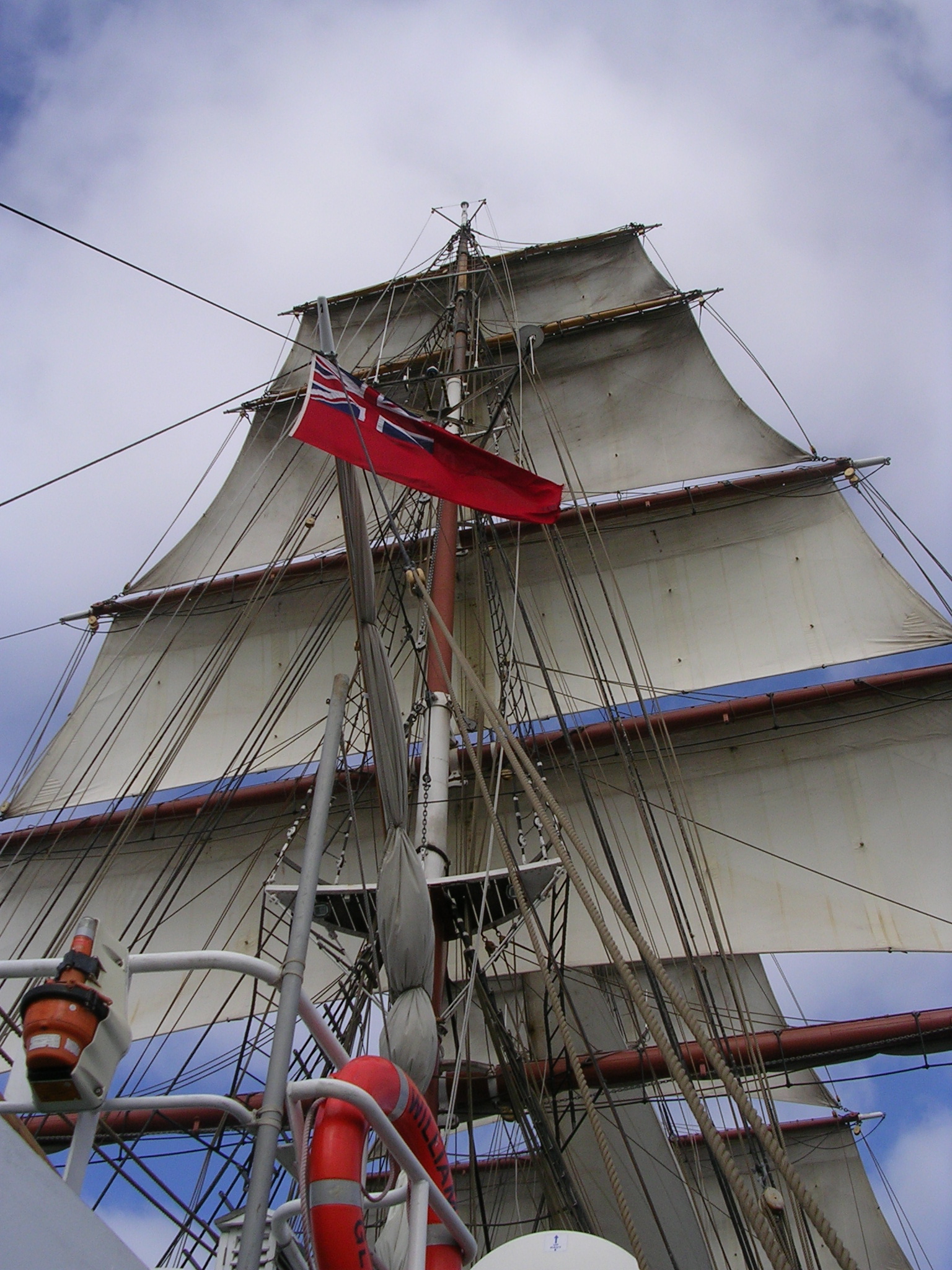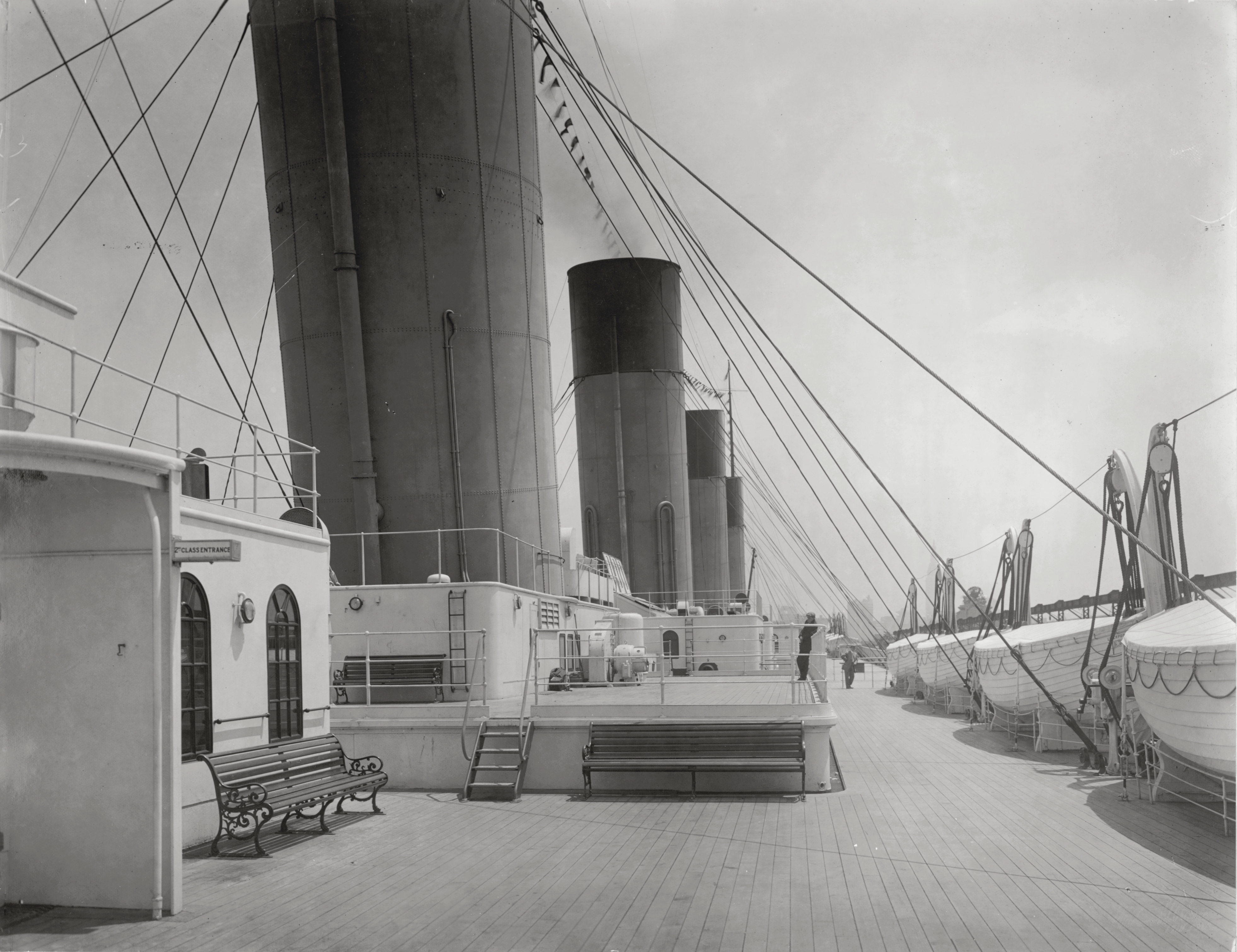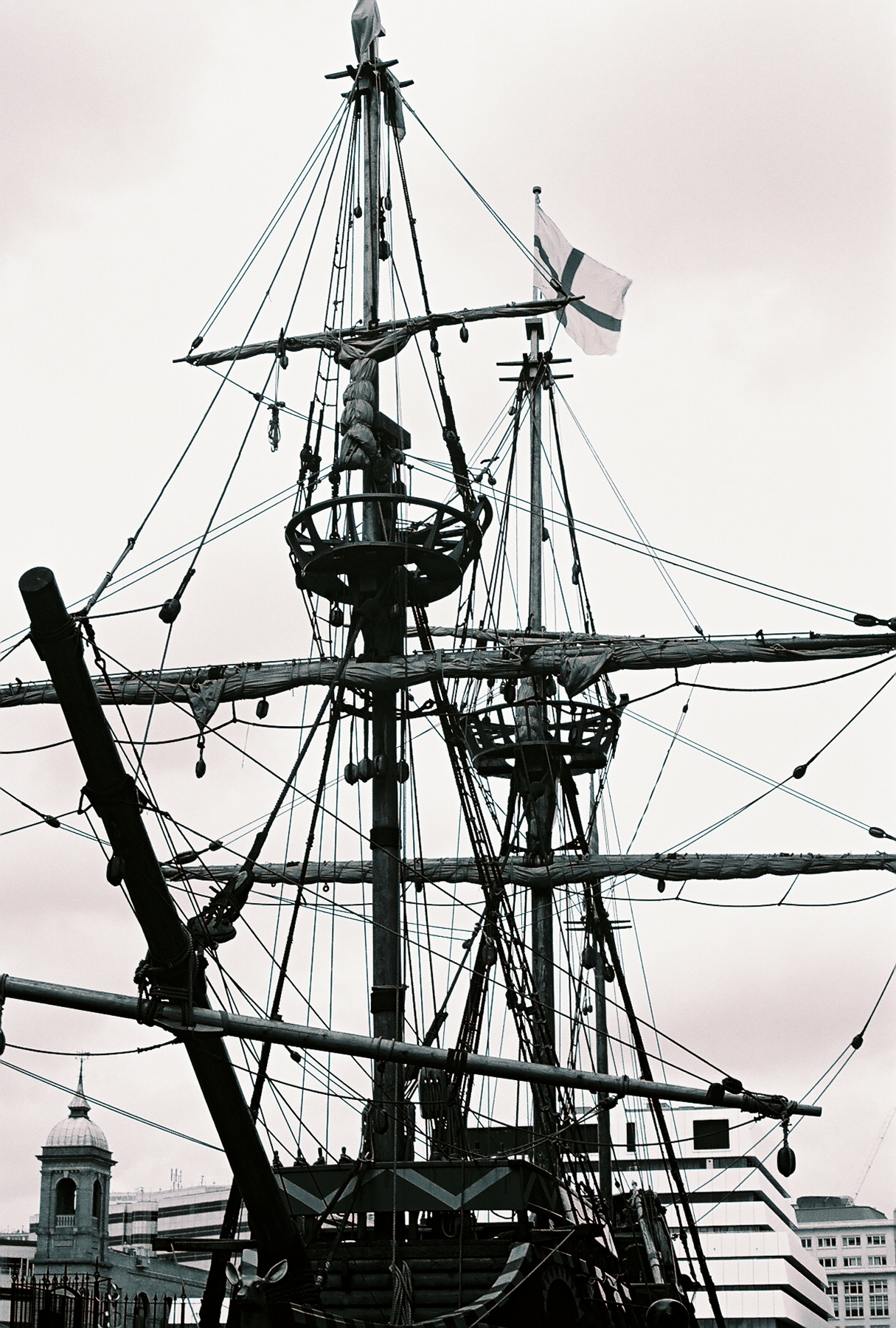|
Denis Sullivan (schooner)
The S/V ''Denis Sullivan'' is a replica three-masted, wooden, gaff rigged schooner originally from Milwaukee, Wisconsin. She was a flagship of both the state of Wisconsin and of the United Nations Environment Programme until she was sold to the World Ocean School and moved to Boston, Massachusetts in late 2022. History The construction of the ''Denis Sullivan'' was first proposed in 1991 by a group of Milwaukee residents and volunteers from other states. Their plan was to build a tall ship which would serve as a platform for educating people about the Great Lakes. Community involvement was welcome in the project, and almost a thousand people donated almost a million volunteer hours toward the ''Denis Sullivan'' construction. Through the efforts of both professional shipwrights and volunteers, the ''Denis Sullivan'' was partially completed and launched in June 2000. She departed Milwaukee for her first sail to the Caribbean in November 2000. Folk singer Pete Seeger recorded a son ... [...More Info...] [...Related Items...] OR: [Wikipedia] [Google] [Baidu] |
United States
The United States of America (U.S.A. or USA), commonly known as the United States (U.S. or US) or America, is a country primarily located in North America. It consists of 50 U.S. state, states, a Washington, D.C., federal district, five major unincorporated territories, nine United States Minor Outlying Islands, Minor Outlying Islands, and 326 Indian reservations. The United States is also in Compact of Free Association, free association with three Oceania, Pacific Island Sovereign state, sovereign states: the Federated States of Micronesia, the Marshall Islands, and the Palau, Republic of Palau. It is the world's List of countries and dependencies by area, third-largest country by both land and total area. It shares land borders Canada–United States border, with Canada to its north and Mexico–United States border, with Mexico to its south and has maritime borders with the Bahamas, Cuba, Russia, and other nations. With a population of over 333 million, it is the List of ... [...More Info...] [...Related Items...] OR: [Wikipedia] [Google] [Baidu] |
Square-rigged
Square rig is a generic type of sail and rigging arrangement in which the primary driving sails are carried on horizontal spars which are perpendicular, or square, to the keel of the vessel and to the masts. These spars are called ''yards'' and their tips, outside the lifts, are called the ''yardarms.'' A ship mainly rigged so is called a square-rigger. The square rig is aerodynamically the most efficient running rig (i.e., sailing downwind), and stayed popular on ocean-going sailing ships until the end of the Age of Sail. The last commercial sailing ships, windjammers, were usually square-rigged four-masted barques. History The oldest archaeological evidence of use of a square-rig on a vessel is an image on a clay disk from Mesopotamia from 5000 BC. Single sail square rigs were used by the ancient Egyptians, the Phoenicians, the Greeks, the Romans, and the Celts. Later the Scandinavians, the Germanic peoples, and the Slavs adopted the single square-rigged sail, with it bec ... [...More Info...] [...Related Items...] OR: [Wikipedia] [Google] [Baidu] |
Keel
The keel is the bottom-most longitudinal structural element on a vessel. On some sailboats, it may have a hydrodynamic and counterbalancing purpose, as well. As the laying down of the keel is the initial step in the construction of a ship, in British and American shipbuilding traditions the construction is dated from this event. Etymology The word "keel" comes from Old English , Old Norse , = "ship" or "keel". It has the distinction of being regarded by some scholars as the first word in the English language recorded in writing, having been recorded by Gildas in his 6th century Latin work '' De Excidio et Conquestu Britanniae'', under the spelling ''cyulae'' (he was referring to the three ships that the Saxons first arrived in). is the Latin word for "keel" and is the origin of the term careen (to clean a keel and the hull in general, often by rolling the ship on its side). An example of this use is Careening Cove, a suburb of Sydney, Australia, where careening was carried ... [...More Info...] [...Related Items...] OR: [Wikipedia] [Google] [Baidu] |
Hull (watercraft)
A hull is the watertight body of a ship, boat, or flying boat. The hull may open at the top (such as a dinghy), or it may be fully or partially covered with a deck. Atop the deck may be a deckhouse and other superstructures, such as a funnel, derrick, or mast. The line where the hull meets the water surface is called the waterline. General features There is a wide variety of hull types that are chosen for suitability for different usages, the hull shape being dependent upon the needs of the design. Shapes range from a nearly perfect box in the case of scow barges to a needle-sharp surface of revolution in the case of a racing multihull sailboat. The shape is chosen to strike a balance between cost, hydrostatic considerations (accommodation, load carrying, and stability), hydrodynamics (speed, power requirements, and motion and behavior in a seaway) and special considerations for the ship's role, such as the rounded bow of an icebreaker or the flat bottom of a landing craft. ... [...More Info...] [...Related Items...] OR: [Wikipedia] [Google] [Baidu] |
United States Coast Guard
The United States Coast Guard (USCG) is the maritime security, search and rescue, and law enforcement service branch of the United States Armed Forces and one of the country's eight uniformed services. The service is a maritime, military, multi-mission service unique among the United States military branches for having a maritime law enforcement mission with jurisdiction in both domestic and international waters and a federal regulatory agency mission as part of its duties. It is the largest and most powerful coast guard in the world, rivaling the capabilities and size of most navies. The U.S. Coast Guard is a humanitarian and security service. It protects the United States' borders and economic and security interests abroad; and defends its sovereignty by safeguarding sea lines of communication and commerce across vast territorial waters spanning 95,000 miles of coastline and its Exclusive Economic Zone. With national and economic security depending upon open global t ... [...More Info...] [...Related Items...] OR: [Wikipedia] [Google] [Baidu] |
Windward
Windward () and leeward () are terms used to describe the direction of the wind. Windward is ''upwind'' from the point of reference, i.e. towards the direction from which the wind is coming; leeward is ''downwind'' from the point of reference, i.e. along the direction towards which the wind is going. The side of a ship that is towards the leeward is its "lee side". If the vessel is heeling under the pressure of crosswind, the lee side will be the "lower side". During the Age of Sail, the term ''weather'' was used as a synonym for ''windward'' in some contexts, as in the '' weather gage''. Because it captures rain, the windward side of a mountain tends to be wet compared to the leeward it blocks. Origin The term "lee" comes from the middle-low German word // meaning "where the sea is not exposed to the wind" or "mild". The terms Luv and Lee (engl. Windward and Leeward) have been in use since the 17th century. Usage Windward and leeward directions (and the points ... [...More Info...] [...Related Items...] OR: [Wikipedia] [Google] [Baidu] |
Centerboard
A centreboard or centerboard (US) is a retractable hull appendage which pivots out of a slot in the hull of a sailboat, known as a ''centreboard trunk'' (UK) or ''centerboard case'' (US). The retractability allows the centreboard to be raised to operate in shallow waters, to move the centre of lateral resistance (offsetting changes to the sailplan that move the centre of effort aft), to reduce drag when the full area of the centreboard is not needed, or when removing the boat from the water, as when trailering. A centreboard which consists of solely a pivoting metal plate is called a centerplate. A daggerboard is similar but slides vertically rather than pivoting. The analog in a scow is a bilgeboard: these are fitted in pairs and used one at a time. General History Lt. John Schank (c. 1740 – 6 February 1823) was an officer of the British Royal Navy and is credited with the invention of the centerboard. Schank, however, gave credit for the idea to British Brigadier General ... [...More Info...] [...Related Items...] OR: [Wikipedia] [Google] [Baidu] |
Draft (hull)
The draft or draught of a ship's hull is the vertical distance between the waterline and the bottom of the hull ( keel). The draught of the vessel is the maximum depth of any part of the vessel, including appendages such as rudders, propellers and drop keels if deployed. Draft determines the minimum depth of water a ship or boat can safely navigate. The related term air draft is the maximum height of any part of the vessel above the water. The more heavily a vessel is loaded, the deeper it sinks into the water, and the greater its draft. After construction, the shipyard creates a table showing how much water the vessel displaces based on its draft and the density of the water (salt or fresh). The draft can also be used to determine the weight of cargo on board by calculating the total displacement of water, accounting for the content of the ship's bunkers, and using Archimedes' principle. The closely related term "trim" is defined as the difference between the forward and a ... [...More Info...] [...Related Items...] OR: [Wikipedia] [Google] [Baidu] |
Deck (ship)
A deck is a permanent covering over a Compartment (ship), compartment or a hull (watercraft), hull of a ship. On a boat or ship, the primary or upper deck is the horizontal structure that forms the "roof" of the hull, strengthening it and serving as the primary working surface. Vessels often have more than one level both within the hull and in the superstructure above the primary deck, similar to the floors of a multi-storey building, that are also referred to as decks, as are certain compartments and decks built over specific areas of the superstructure. Decks for some purposes have specific names. Structure The main purpose of the upper or primary deck is structural, and only secondarily to provide weather-tightness and support people and equipment. The deck serves as the lid to the complex box girder which can be identified as the hull. It resists Tension (physics), tension, Compression (physics), compression, and racking forces. The deck's scantling is usually the same as t ... [...More Info...] [...Related Items...] OR: [Wikipedia] [Google] [Baidu] |
Rigging
Rigging comprises the system of ropes, cables and chains, which support a sailing ship or sail boat's masts—''standing rigging'', including shrouds and stays—and which adjust the position of the vessel's sails and spars to which they are attached—the ''running rigging'', including halyards, braces, sheets and vangs. Etymology According to the Encyclopædia Britannica Eleventh Edition "rigging" derives from Anglo-Saxon ''wrigan'' or ''wringing'', "to clothe". The same source points out that "rigging" a sailing vessel refers to putting all the components in place to allow it to function, including the masts, spars, sails and the rigging. Types of rigging Rigging is divided into two classes, '' standing'', which supports the mast (and bowsprit), and ''running'', which controls the orientation of the sails and their degree of reefing. Configurations differ for each type of rigging, between '' fore-and-aft rigged'' vessels and '' square-rigged'' vessels. Standing ... [...More Info...] [...Related Items...] OR: [Wikipedia] [Google] [Baidu] |
Waterline
The waterline is the line where the hull of a ship meets the surface of the water. Specifically, it is also the name of a special marking, also known as an international load line, Plimsoll line and water line (positioned amidships), that indicates the draft of the ship and the legal limit to which a ship may be loaded for specific water types and temperatures in order to safely maintain buoyancy, particularly with regard to the hazard of waves that may arise. Varying water temperatures will affect a ship's draft, because warm water is less dense than cold water, providing less buoyancy. In the same way, fresh water is less dense than salinated or seawater with a similar lessening effect upon buoyancy. For vessels with displacement hulls, the hull speed is defined by, among other things, the waterline length. In a sailing boat, the waterline length can change significantly as the boat heels, and can dynamically affect the speed of the boat. A waterline can also refer to ... [...More Info...] [...Related Items...] OR: [Wikipedia] [Google] [Baidu] |
Alvin Clark (schooner)
''Alvin Clark'' was a schooner that sailed the Great Lakes for almost two decades. Constructed in 1846 or 1847, it sank during a storm in Green Bay in 1864. It was salvaged in 1969 and moored in Menominee, Michigan, at the Mystery Ship Seaport, located in the Menominee River at the foot of Sixth Avenue. The ship was designated a Michigan State Historic Site in 1972 and listed on the National Register of Historic Places in 1974; ''Alvin Clark'' was removed from the National Register of Historic Places on June 10, 2020. Although the schooner was in pristine condition when raised, no plans were in place for its conservation, and the ship rapidly deteriorated. The remains of ''Alvin Clark'' were destroyed in 1994. Description ''Alvin Clark'' was a square stern lumber schooner measuring in length, with a beam of and a displacement of 218 tons. It was constructed primarily of white oak, with planking and -wide ribs. The ship had a single deck, two masts including a mainmast, ... [...More Info...] [...Related Items...] OR: [Wikipedia] [Google] [Baidu] |






